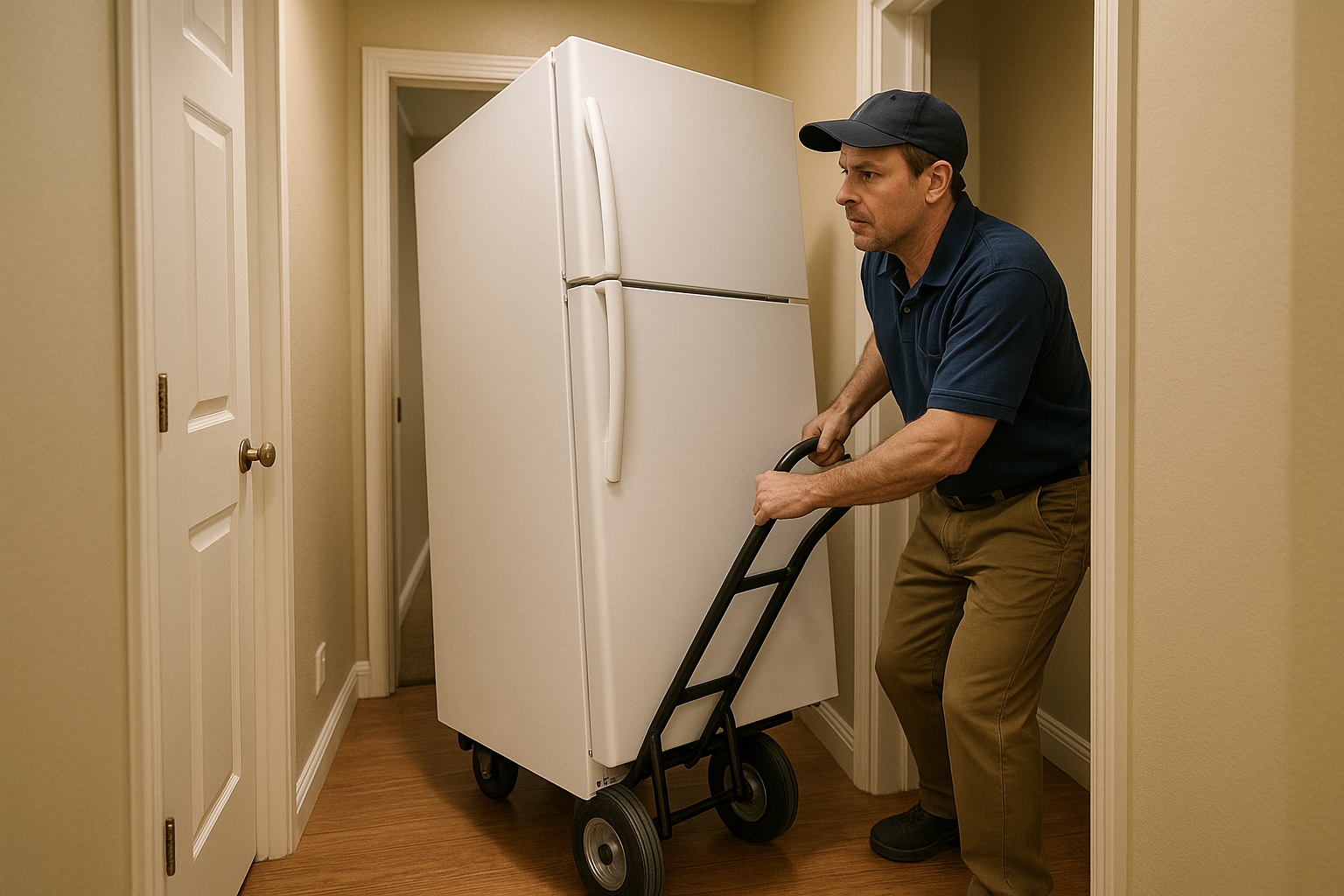Expert Appliance Movers for Safe and Efficient Relocation

Moving large appliances like refrigerators, dishwashers, and washing machines can be one of the most challenging aspects of a move. These items are often heavy, bulky, and delicate, making them difficult to transport without the proper tools and expertise. Attempting to handle this process on your own can lead to serious injuries or damage to both the appliances and your home. Hiring expert appliance movers ensures a smooth and stress-free relocation experience.
By trusting professionals who specialize in moving heavy appliances, you not only save time and energy but also ensure that your appliances are transported safely and efficiently.
Why Choose Expert Appliance Movers
Here’s why hiring expert appliance movers is the best choice:
- Safety: Moving heavy appliances involves risks of injury. Expert appliance movers use proper lifting techniques and equipment to ensure safety for both your appliances and your home.
- Specialized Tools: Professionals have access to equipment such as dollies, ramps, and straps, ensuring that your appliances are moved smoothly and without damage.
- Time Efficiency: Experts move appliances more quickly and efficiently, saving you time during a busy moving process.
- Damage-Free Transport: Professional movers take the necessary precautions to avoid damaging your appliances, as well as any furniture or walls in your home.
Services Offered by Appliance Moving Companies

An appliance moving company provides several essential services to make your move easier:
- Disconnection and Reconnection: Movers handle disconnection and reconnection of appliances, ensuring that everything is set up correctly in your new space.
- Protection: Movers use high-quality packing materials to protect your appliances from scratches, dents, and other damage during the move.
- Efficient Loading and Unloading: Professional movers have the tools and expertise to load and unload heavy appliances without any risk of injury or damage.
- Reinstallation: After arriving at your new location, movers will ensure your appliances are correctly installed and fully operational.
These services give you peace of mind, knowing that your appliances will be handled with the utmost care.
Heavy Appliance Movers Near Me
If you’re searching for heavy appliance movers near me, local professionals are your best option. Heavy appliance movers near me specialize in safely relocating large appliances, including refrigerators, washers, stoves, and dishwashers.
Heavy appliance movers near me can handle:
- Refrigerators and Freezers
- Washers and Dryers
- Ovens and Stoves
- Dishwashers
Choosing a local company ensures that your move is handled efficiently and that your appliances arrive safely at their destination.
Commercial Appliance Movers
For businesses that require the relocation of commercial-grade appliances, such as industrial ovens and large freezers, hiring commercial appliance movers is a must. These movers have experience with heavy-duty equipment and understand the logistics of moving appliances without disrupting your business.
Whether you own a restaurant, hotel, or another business with large appliances, commercial appliance movers ensure that your equipment is moved quickly, safely, and with minimal downtime.
Kitchen Appliance Movers
Kitchen appliance movers specialize in relocating appliances that are crucial to daily life, such as refrigerators, dishwashers, and stoves. These items are often heavy, delicate, and expensive, which makes professional handling essential.
By hiring kitchen appliance movers, you ensure that your appliances are carefully packed, transported, and installed in your new space without any damage.
How to Choose the Right Appliance Moving Company
Choosing the right appliance moving company ensures a smooth and hassle-free relocation. Consider these factors when selecting a mover:
- Experience: Look for a company with experience in both residential and commercial appliance moving.
- Reputation: Check reviews and testimonials to make sure the company is reliable and trustworthy.
- Insurance: Ensure that the company is licensed and insured to protect your appliances during the move.
- Transparent Pricing: Request an estimate and confirm that the company provides transparent, upfront pricing with no hidden fees.
Choosing the right company guarantees that your appliances will be relocated safely and efficiently.
Preparing Your Appliances for the Move
While appliance movers will do most of the work, here are a few things you can do to prepare your appliances:
- Clean and Empty: Make sure all refrigerators, freezers, and other appliances are emptied to avoid spills or leaks during the move.
- Disconnect: If applicable, disconnect all gas, water, and electrical connections before the movers arrive.
- Remove Loose Parts: Take out any shelves, trays, or removable parts to prevent them from being damaged during transport.
These steps ensure that your appliances are ready for transport, helping the movers work more efficiently.
FAQs About Appliance Movers
Q1: What types of appliances can movers handle?
Appliance movers can relocate a variety of appliances, including refrigerators, washing machines, dishwashers, stoves, and commercial equipment.
Q2: Will movers disconnect and reconnect appliances?
Yes, many appliance moving services offer disconnection and reconnection of your appliances as part of their package.
Q3: Do movers use special tools to move heavy appliances?
Yes, heavy appliance movers use specialized tools, such as dollies, ramps, and lifting straps, to ensure the safe transport of large appliances.
Q4: How do I find reliable movers near me?
Search for appliance movers near me, read reviews, and check that the company is licensed and insured for your peace of mind.
Q5: Do movers install appliances in the new location?
Many appliance moving companies offer installation services to ensure your appliances are correctly set up in your new home.

Hiring expert appliance movers guarantees that your heavy appliances are relocated safely, quickly, and without stress. Professional movers have the tools, experience, and skills to handle your appliances with care, ensuring they arrive at your new location in perfect condition. Whether you’re moving home appliances or commercial equipment, choosing the right appliance moving company will make your move much easier.
Buzzmoving pairs you with trusted movers nationwide for a smooth, worry-free move. Get your free quote today and let our experts take care of the heavy lifting!

























